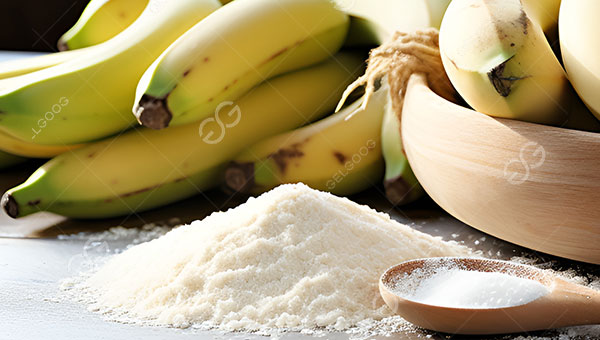Plantain flour is a powder product made from plantain through a series of processing techniques. It has the advantages of long shelf life, high nutritional value, easy transportation and storage, and is widely used in baby food, nutritional supplements, baking, beverages, etc. This article will introduce the process of making plantain flour in detail, which usually includes peeling, slicing, blanching and color protection, drying, and grinding. The whole process is automatically completed by the banana flour production line

1. Raw material selection and peeling: Remove the plantain skin to provide clean pulp for subsequent processing.
Operation points:
Choosing plantain with moderate maturity is the prerequisite for ensuring the quality of plantain flour. Peeling can be done manually or by automatic peeling machine.
Notes:
Do not use overripe, rotten, or spotted plantain, otherwise it will affect the color and taste of the flour.
Avoid damaging the pulp during peeling to reduce oxidation and discoloration.
2. Slicing: Slice the plantain into slices of appropriate thickness for blanching and drying.
Operation points:
Generally, slice the plantain into 2-5 mm slices, and the thickness should be consistent to facilitate even heat distribution during subsequent processing.
Notes:
Slices that are too thick will easily extend the drying time, and slices that are too thin will be fragile and easy to burn.
Using a stainless steel slicer can avoid discoloration caused by the reaction between plantain and metals.
The operating environment should be clean and hygienic to avoid cross contamination.
3. Blanching and color protection: kill surface microorganisms, inactivate enzymes, prevent oxidation and discoloration, and improve drying quality.
Operation points:
Blanch the plantain slices in hot water at about 95℃ for 30-60 seconds, and then quickly cool them down in cold water.
Notes:
Blanching time that is too short cannot protect the color and sterilize, while blanching time that is too long may cause the flesh to become soft and rotten and nutrients to be lost.
Adding 0.1%-0.3% antioxidants (such as vitamin C or citric acid) can enhance the color protection effect and keep the color of the finished plantain flour light yellow.
Quickly cool the water to prevent the residual temperature from continuing to “cook” the plantain flour and affecting the flour flavor.
4. Drying: Remove moisture from plantain, improve preservation, and facilitate subsequent grinding.
Operation points:
You can choose to use a hot air circulation dryer or a continuous mesh belt dryer for drying. The drying temperature is controlled at 60-70℃ and the drying time is 4-8 hours until the moisture content of the plantain slices is less than 8%.
Notes:
The temperature should not be too high to prevent the sugar in the plantain from caramelizing and the color from darkening.
During the drying process, ensure that the heat distribution is uniform to avoid local browning or moisture.
The use of mesh belt drying equipment can achieve continuous and automated operation, which is suitable for large-scale production.
5. Grinding: Grind the dried plantain slices into fine powder to make the final product.
Operation points:
Use a stainless steel high-speed grinder or airflow mill for grinding. The powder particle size is usually controlled between 60-120 mesh to meet different application requirements.
Notes:
Before grinding, make sure the plantain slices are completely dry to avoid sticking to the knife or powder sticking together.
The grinding equipment must be thoroughly cleaned to prevent impurities from mixing in.
The equipment temperature should not be too high during the grinding process, otherwise it may cause flavor loss or powder discoloration.
6. Packaging and storage
Packaging requirements:
Use moisture-proof and light-proof vacuum aluminum foil bags or composite film packaging;
The packaging environment should be clean, and humidity and dust should be controlled.
Storage conditions:
It is recommended to store in a cool and dry place, avoiding direct sunlight;
The shelf life at room temperature is generally about 12 months.